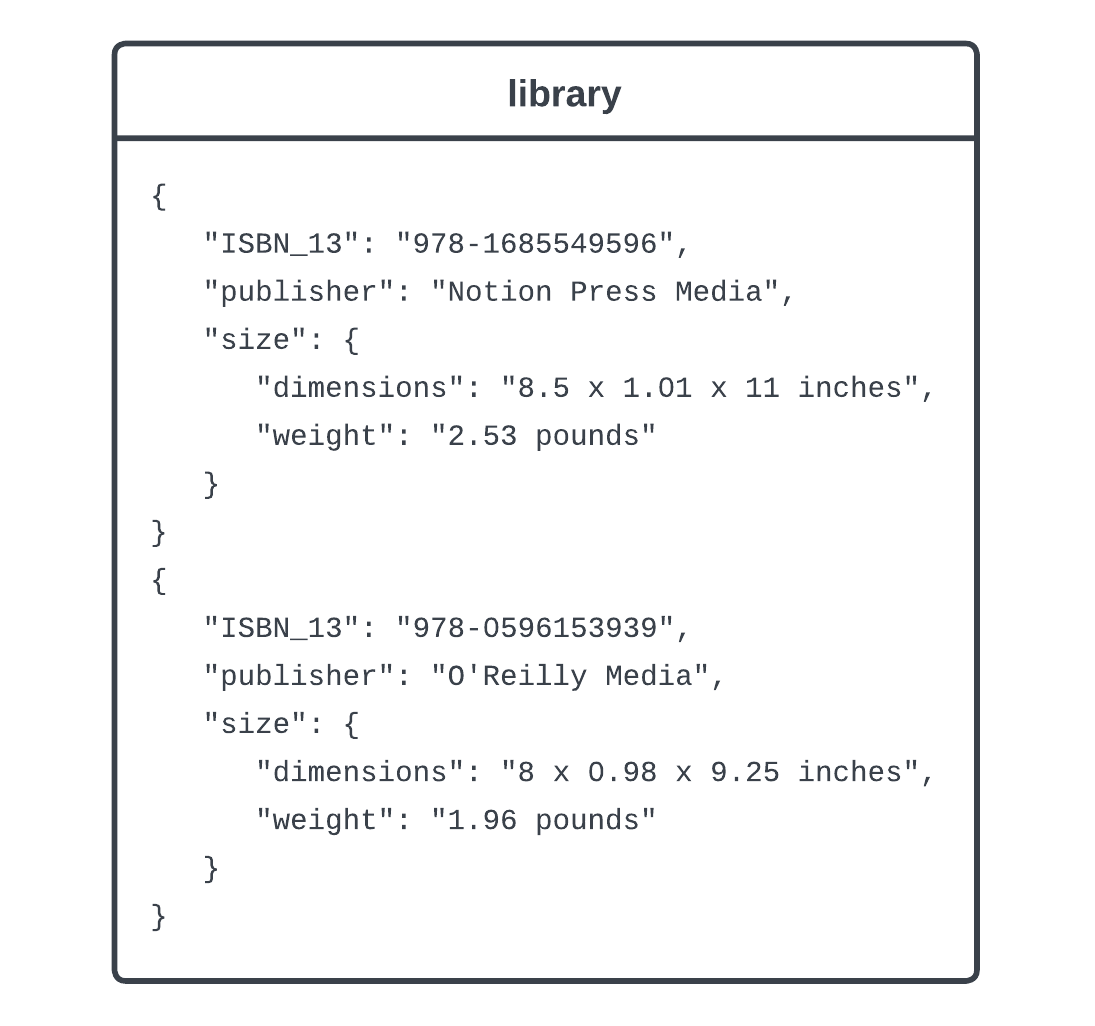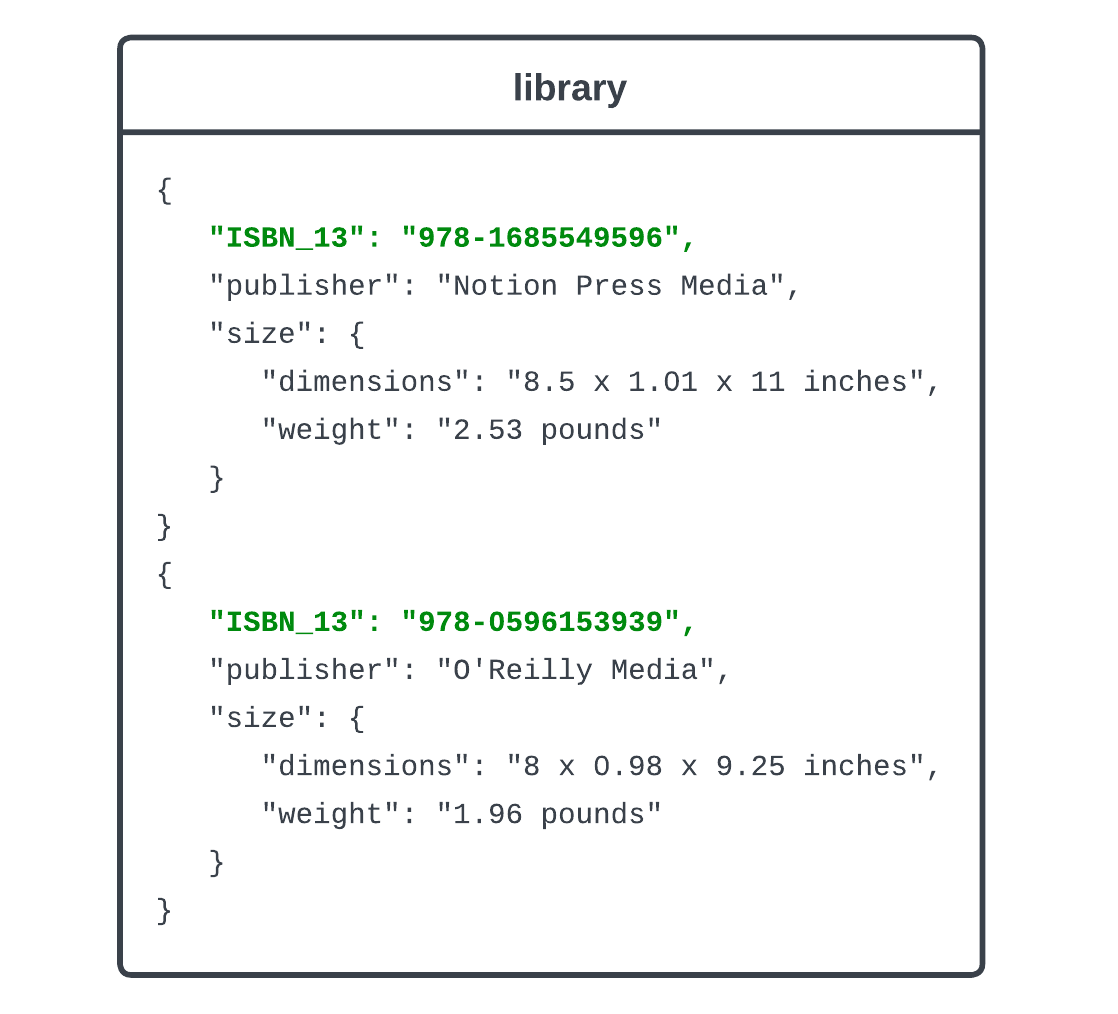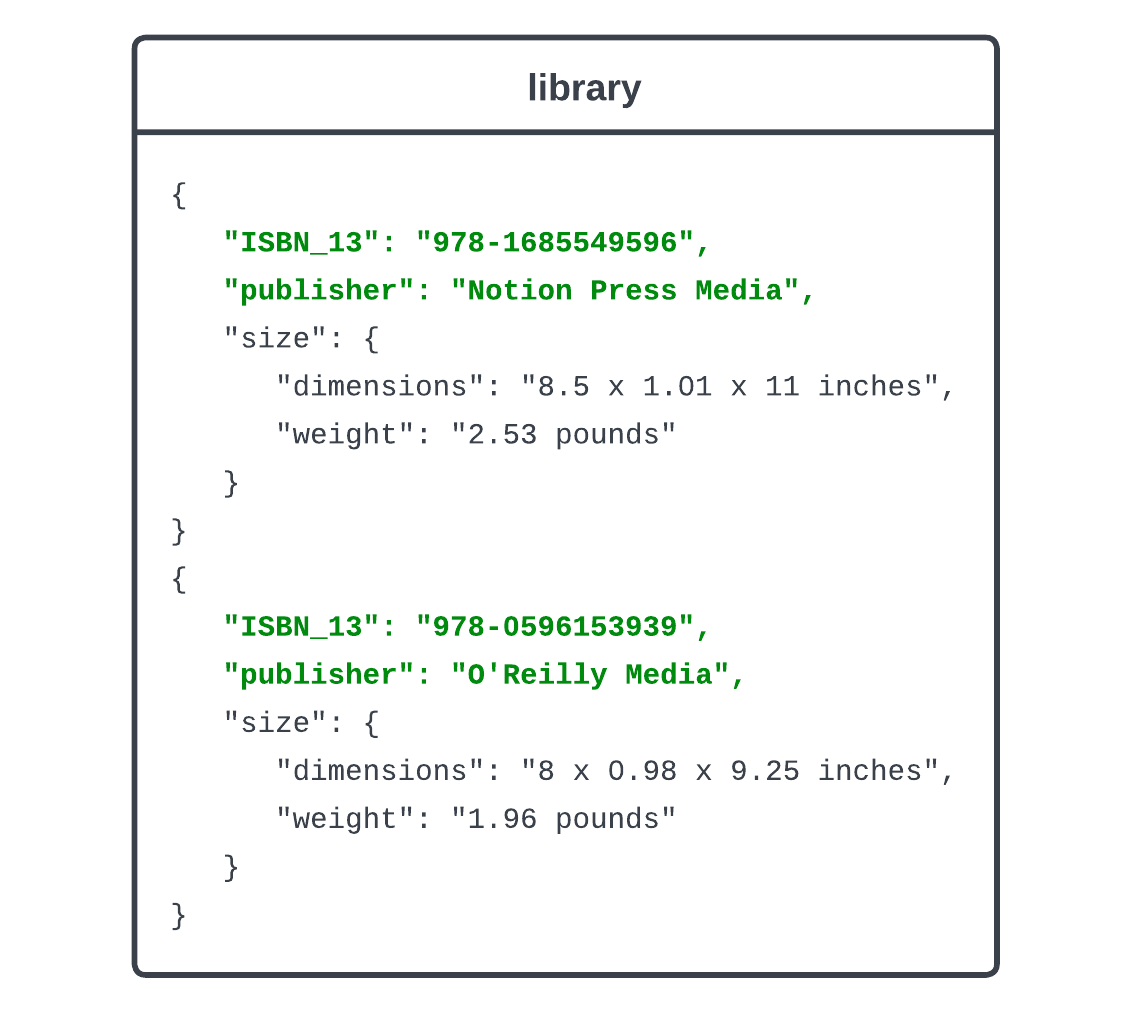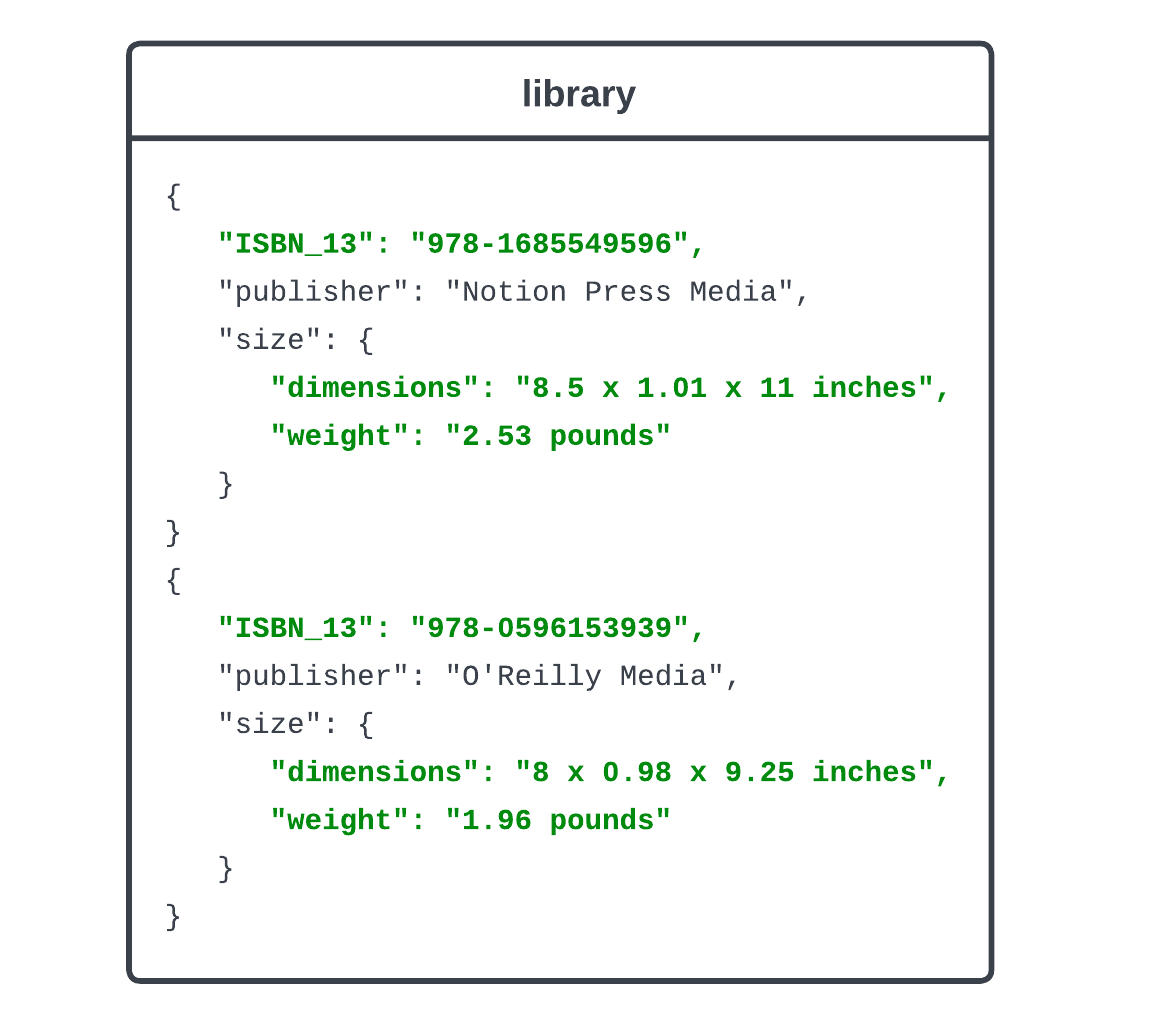Working with semi-structured data in Snowflake
Introduction to NoSQL

Jake Roach
Data Engineer
Semi-structured data in Snowflake
{
"ISBN_13": "978-1685549596",
"publisher": "Notion Press Media",
"size": {
"dimensions": "8.5 x 1.01 x 11 inches",
"weight": "2.53 pounds"
}
}
- Allows data to be stored in "raw" format
VARIANTtype- Store each object in a single column
Semi-structured data types in Snowflake
Snowflake also supports the OBJECT and ARRAY types
OBJECTis similar to dictionaries in PythonARRAYis similar to lists in Python
$$
VARIANT type
- Stores semi-structured data in a single column

Querying semi-structured data with bracket notation

Query:
SELECT
library['ISBN_13']
FROM books;
Result:

Querying semi-structured data with dot notation

Query:
SELECT
library:ISBN_13,
library:publisher
FROM books;
Result:

Querying nested semi-structured data

SELECT
library:ISBN_13,
library:size.dimensions,
library:size.weight,
FROM books;
SELECT
library["ISBN_13"],
library["size"]["dimensions"],
library["size"]["weight"],
FROM books;

Let's practice!
Introduction to NoSQL

